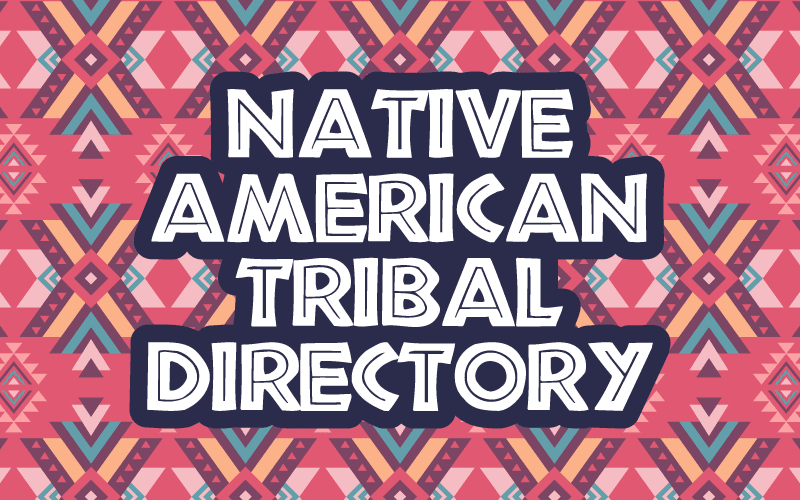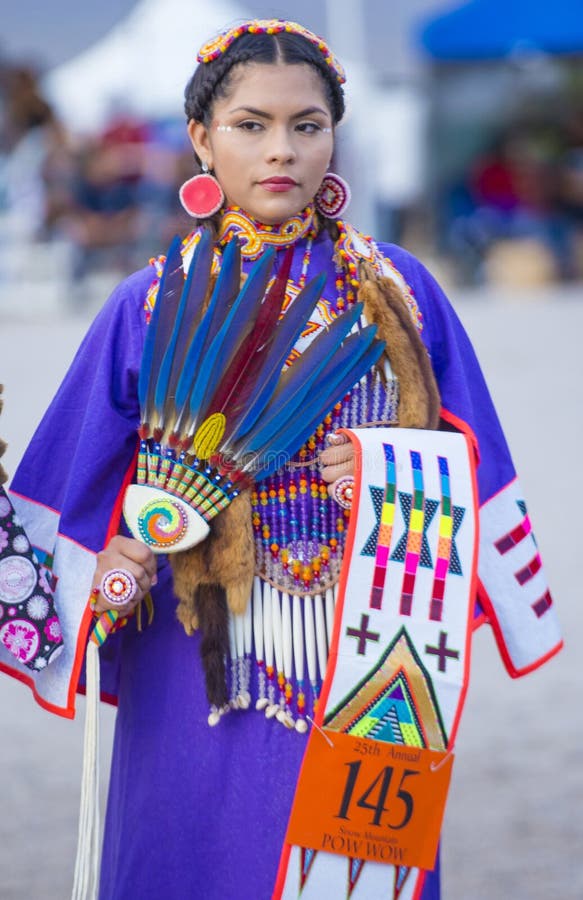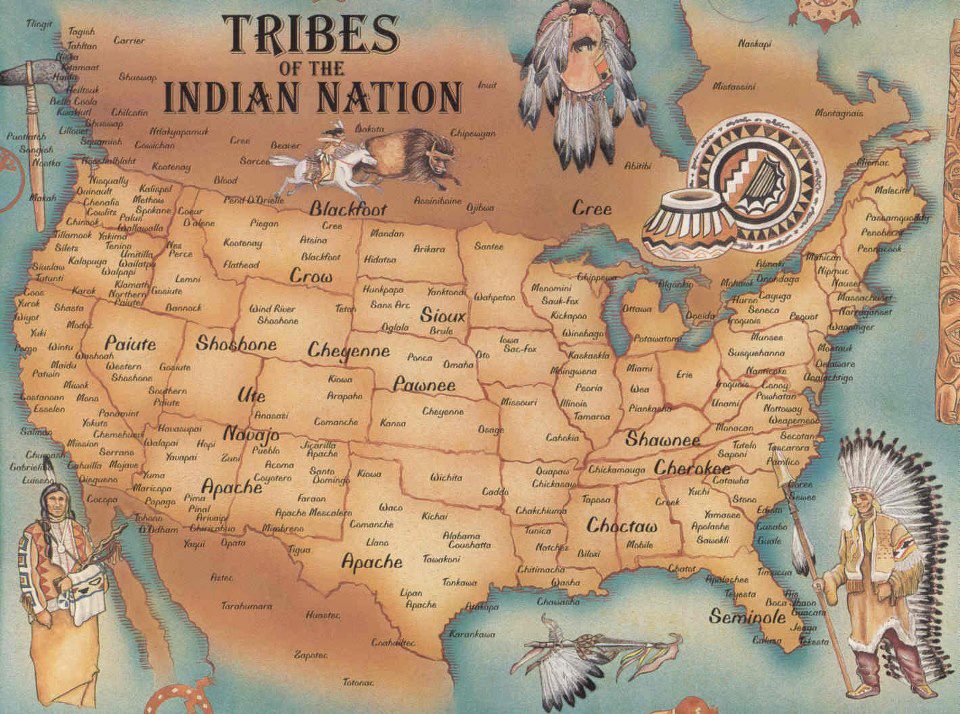
Nevada, a state often characterized by its stark, captivating landscapes and the vibrant glow of its urban centers, holds a history far deeper and more intricate than many realize. Beyond the neon lights and the vast, empty expanses lies a profound Indigenous heritage, etched into the very soil and spirit of the land. This article delves into the Nevada Native American tribes map, not just as a geographical representation, but as a living tapestry of history, identity, and enduring resilience, perfectly suited for a traveler seeking understanding or a student of history eager to learn.
The Land Defines the People: The Great Basin Context
To understand the Indigenous peoples of Nevada, one must first understand the land itself. Nevada lies predominantly within the Great Basin, a vast, arid region characterized by its unique "basin and range" topography – parallel mountain ranges separated by flat, arid valleys. This environment, with its extreme temperatures, limited water resources, and diverse but often sparse vegetation, profoundly shaped the cultures that thrived here for millennia.
Unlike agricultural societies elsewhere, the native tribes of Nevada were primarily hunter-gatherers, masters of adapting to and utilizing every available resource. Their lives were dictated by seasonal movements, following the cycles of pine nut harvests, game migrations, and the availability of water. This nomadic or semi-nomadic existence fostered deep ecological knowledge, resourcefulness, and a profound spiritual connection to their ancestral territories. The "map" for these peoples wasn’t a static document; it was a mental blueprint of springs, sacred sites, hunting grounds, and gathering areas, passed down through generations.

Mapping the Ancestral Territories: Key Nevada Tribes
While the modern map of Nevada shows county lines and state borders, the ancestral map reveals a different partitioning, one based on language, culture, and resource stewardship. The primary Indigenous groups of Nevada include the Northern Paiute, Southern Paiute, Western Shoshone, and Washoe. Each occupied distinct, though sometimes overlapping, territories and developed unique cultural practices suited to their specific environments.
-

The Northern Paiute (Numu):
- Territory: Historically, the Northern Paiute inhabited the vast northern and western reaches of Nevada, extending into parts of Oregon, Idaho, and California. Key areas within Nevada included the Pyramid Lake, Winnemucca, Fallon, and Walker River regions.
- Identity & History: Known as "Numu" (The People), the Northern Paiute were ingenious hunter-gatherers, utilizing the abundant fish from lakes like Pyramid and Walker, hunting various game, and meticulously harvesting pine nuts, roots, and seeds. Their identity was strongly tied to their specific band and its territory, each named for a characteristic food source or location (e.g., "Cui-ui Ticutta" or Cui-ui Eaters, referring to the fish in Pyramid Lake). Their history is marked by significant resistance to American expansion, most notably the Pyramid Lake War of 1860.
- Modern Presence: Today, Northern Paiute communities thrive on reservations such as Pyramid Lake, Walker River, Fallon, and Lovelock, among others. They are actively involved in cultural preservation, land and water rights advocacy, and economic development.

-
The Southern Paiute (Nuwuvi):
- Territory: Located in the southern tip of Nevada, extending into parts of Utah, Arizona, and California. Their Nevada lands included areas around present-day Las Vegas, Moapa Valley, and the Virgin River.
- Identity & History: The "Nuwuvi" (The People) of the south adapted to an even hotter, more arid environment. While still relying on hunting and gathering, some Southern Paiute groups practiced limited agriculture, cultivating corn, beans, and squash along river valleys where water was more accessible. Their intricate knowledge of desert plants and water sources was paramount to survival. They faced immense pressures from early Mormon settlers and later from the rapid development of Las Vegas.
- Modern Presence: The Moapa Band of Paiutes and the Las Vegas Paiute Tribe are prominent Southern Paiute communities in Nevada today, working to preserve their language, traditions, and economic independence.

-
The Western Shoshone (Newe):
- Territory: The Western Shoshone ("Newe" or The People) occupied a vast territory across central and eastern Nevada, extending into Idaho, Utah, and California. Their lands were particularly rich in pine nut groves.
- Identity & History: The Shoshone were quintessential Great Basin hunter-gatherers, renowned for their deep knowledge of the land and its resources. Their identity was intrinsically linked to "Newe Sogobia," their ancestral homeland. The Ruby Valley Treaty of 1863, signed between the Western Shoshone and the U.S. government, acknowledged their vast land holdings but was later largely ignored, leading to ongoing land rights disputes that continue to this day, making them significant figures in the modern Native American land rights movement.
- Modern Presence: Western Shoshone communities are found on reservations like Duck Valley (shared with Northern Paiute), Ely, Yomba, and South Fork, among others. They are at the forefront of efforts to protect their traditional lands, revitalize their language, and assert their sovereignty.
-
The Washoe (Wášišiw):
- Territory: Unique among Nevada’s tribes, the Washoe ("Wášišiw" or People from Here) occupied a relatively compact, yet resource-rich territory primarily around the Lake Tahoe Basin and the adjacent valleys of the Carson and Truckee Rivers, straddling the Nevada-California border.
- Identity & History: The Washoe are a distinct linguistic group, speaking a Hokan language unrelated to the Uto-Aztecan languages of the Paiute and Shoshone. Their identity was deeply rooted in the pristine environment of Lake Tahoe, which provided abundant fish, and the surrounding mountains and valleys, offering game and pine nuts. They were master basket weavers, and their spiritual beliefs were closely tied to the natural world. The influx of gold and silver miners and settlers into the Tahoe region drastically impacted their way of life and access to traditional resources.
- Modern Presence: The Washoe Tribe of Nevada and California maintains communities in Gardnerville, Dresslerville, and Woodfords, actively working to preserve their unique language and culture, manage their land, and engage in economic development.
Pre-Contact Life: A World of Balance and Knowledge
Before European contact, the map of Nevada was a complex mosaic of interconnected trails, seasonal camps, and sacred sites. Life was challenging but rich, characterized by a profound understanding of the environment. Families and bands moved strategically, harvesting pine nuts in the fall, fishing in the spring, hunting deer and rabbits throughout the year, and gathering a vast array of edible and medicinal plants. Social structures were generally egalitarian, with leadership based on wisdom and skill. Oral traditions, stories, and ceremonies reinforced their identity, passed down knowledge, and maintained spiritual connections to the land and their ancestors. The "map" was not just territory; it was a repository of history, belief, and survival strategies.
The Era of Transformation: European Contact and American Expansion
The arrival of Europeans and, more significantly, American pioneers and miners in the 19th century brought about a cataclysmic shift for Nevada’s Indigenous peoples. While Spanish and Mexican influence was limited, the California Gold Rush (1849) and the Nevada Silver Rush (Comstock Lode, 1859) brought a relentless tide of non-Native settlers across their ancestral lands.
This period marked an era of immense hardship:
- Resource Depletion: Settlers diverted water, grazed livestock, and cut down pine nut forests, directly impacting the tribes’ ability to sustain themselves.
- Disease: New diseases, for which Indigenous populations had no immunity, decimated communities.
- Violence and Displacement: Conflicts over land and resources were frequent and often brutal. Tribes were forcibly removed from their traditional territories.
- Treaties and Reservations: The U.S. government established reservations, often on marginal lands, and signed treaties that were frequently broken or unilaterally altered. These reservations, while providing a degree of protected land, also severely restricted traditional nomadic patterns and imposed new, foreign systems of governance.
- Cultural Suppression: Policies like mandatory boarding schools aimed to "civilize" Native American children by stripping them of their language, culture, and identity, inflicting deep and lasting trauma.
This period fundamentally redrew the map, imposing artificial boundaries and attempting to erase the Indigenous presence. Yet, against overwhelming odds, the spirit and identity of the tribes endured.
Resilience and Revival: Modern Nevada Native Americans
Today, the Native American tribes of Nevada are powerful examples of resilience, cultural revival, and self-determination. They have navigated centuries of adversity and are actively shaping their own futures, while honoring their past.
- Sovereignty and Self-Governance: Tribal nations in Nevada operate as sovereign governments, managing their own affairs, law enforcement, and resources. This includes building strong tribal economies, often through gaming, tourism, and natural resource management, which in turn fund essential services like healthcare, education, and housing for their members.
- Cultural Preservation: There is a strong movement to revitalize languages (e.g., Paiute, Shoshone, Washoe language programs), traditional arts (basket weaving, pottery, beading), and ceremonies. Cultural centers and museums play a vital role in educating both tribal members and the public about their rich heritage.
- Land and Water Rights: Many tribes continue to advocate for the recognition of their ancestral land and water rights, seeking justice for past injustices and ensuring sustainable management of critical resources. The Western Shoshone land claims, for example, remain a significant legal and political issue.
- Education and Advocacy: Tribal colleges and educational programs empower the next generation. Native American leaders actively engage in state and national politics to advocate for Indigenous rights and interests.
- Economic Development: Beyond gaming, tribes are investing in diverse enterprises, from agriculture and ranching to renewable energy, creating jobs and opportunities within their communities.
For the Traveler and Learner: Engaging Respectfully
For those interested in understanding Nevada beyond its surface, engaging with its Indigenous heritage is a profoundly rewarding experience. As a traveler or student, approaching this history with respect and an open mind is paramount:
- Learn Before You Go: Research the specific tribes whose ancestral lands you plan to visit. Understand their history and contemporary issues.
- Visit Tribal Cultural Centers and Museums: Many tribes operate cultural centers, such as the Pyramid Lake Paiute Tribe Museum and Visitors Center or the Stewart Indian School Cultural Center & Museum in Carson City, which offer invaluable insights into their history, art, and living cultures.
- Support Indigenous Businesses: Seek out and support Native-owned businesses, art galleries, and cultural events. This directly contributes to tribal economies.
- Respect Sacred Sites and Private Lands: If visiting tribal lands, always seek permission, respect signage, and understand that many areas hold deep spiritual significance and are not open to the public. Treat all natural spaces with reverence.
- Acknowledge the Past, Recognize the Present: Understand that the history of Native Americans in Nevada is not just in the past; it is a vibrant, living story of ongoing resilience, cultural continuity, and self-determination.
Conclusion
The map of Nevada, when viewed through an Indigenous lens, transforms from a mere geographical outline into a dynamic narrative of ancient pathways, enduring communities, and unbroken cultural ties. The Northern Paiute, Southern Paiute, Western Shoshone, and Washoe are not relics of the past; they are sovereign nations, integral to the identity and future of Nevada. Their history is a testament to human adaptability, spiritual depth, and the unbreakable bond between people and their ancestral lands. By understanding and respecting this profound heritage, we gain a far richer appreciation for the true spirit of Nevada, a spirit that echoes across its vast deserts and ancient mountains, vibrant and alive.
